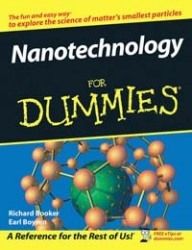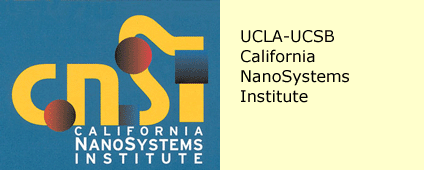Will nanotech, biotech bonanza rescue state from its politicians?
by CalWatchdog Staff | February 23, 2013 8:15 am
Feb. 23, 2013
By Chris Reed
 The Golden State may yet be rescued from its epic mismanagement by private-sector innovation that brings vast new wealth to California. For all our Solyndra-style boondoggles, there’s also extraordinarily promising work being done that could make San Diego County the Silicon Valley of both nanotechnology and biotechnology — interrelated fields which could revolutionize a stunning variety of industries and professions.
The Golden State may yet be rescued from its epic mismanagement by private-sector innovation that brings vast new wealth to California. For all our Solyndra-style boondoggles, there’s also extraordinarily promising work being done that could make San Diego County the Silicon Valley of both nanotechnology and biotechnology — interrelated fields which could revolutionize a stunning variety of industries and professions.
Major nanotech work is also being done in the Bay Area and several UC campuses besides UC San Diego. Only the Boston area has anything even approaching the concentration of advanced research seen up and down California. Here’s a map giving a good sense of the Golden State’s lead[1] in this field. Austin, Texas, and the research triangle in North Carolina are only wanna-bes at this point.
Revolutions in medicine, energy, engineering and more
California’s good fortune on this front comes as stories about nanotechnology’s promise[2] give way to stories about its increasingly common and ingenious uses[3]. The same holds for biotechnology[4]. I wrote about what this could mean[5] for our state, our nation and the world last fall in the U-T San Diego:
“… American scientists … are poised to change the world through biotechnology -– the use of biological processes to manufacture products –- and nanotechnology -– the engineering of functional systems at the molecular level. … The biggest single concentration of these scientists is … in San Diego –- some at UCSD’s world-leading Department of Bioengineering, some at ambitious private companies like Illumina and Life Technologies, and some at not-for-profit research organizations like the J. Craig Venter Institute.
“The Futurist magazine is right to say we are on the verge of the Bio Age, the modern heir to the transformative Iron, Stone and Bronze ages. Here are some of the breakthroughs we’re likely to see in coming years, achievements that would have seemed like fanciful science fiction not long ago:
“– A revolution in medicine, with nanotech-devised treatments reducing the threat of chronic diseases such as cancer, Alzheimer’s, Parkinson’s and much more. Better tools to control the immune system will make organ replacement far easier -– and the prospect of creating synthetic organs looks more and more realistic. Monitors affixed to or inserted into the body will offer constants checks on health. The net effect: Human longevity could soon be sharply extended.
“– A revolution in energy, with nanotech tools making solar cells far more efficient and with biotech entrepreneurs developing low-cost, low-polluting organic fuels. Microscopic motors will grow in power and ubiquity, transforming many conventional products and giving rise to new types of manufacturing. The net effect could be a far higher standard of living.
“– A revolution in engineering, starting with a stunning new range of possibilities for materials used in buildings, vehicles and far more. “Buckypaper” –- immensely strong, super-light material –- may soon be relatively inexpensive. “Bioprinters” -– machines that can “print” living organisms -– are being developed. It’s not hyperbole to say the net effect is unfathomable. When engineering at the level of the atom becomes practical and easy, human imagination will take us astounding places.”
An ‘absurdly simple,’ immensely powerful battery
 Now comes a discovery at UCLA[6] that has the same fanciful science-fiction feel, courtesy of researchers who are part of the California NanoSystems Initiative[7].
Now comes a discovery at UCLA[6] that has the same fanciful science-fiction feel, courtesy of researchers who are part of the California NanoSystems Initiative[7].
“There’s a video making the viral rounds describing a potential energy storage device that seems way too good to be true: a high capacity ‘battery’ made in an almost absurdly simple process, which offers the prospect of super-fast charging of everything from smartphones to electric cars, and which can be safely composted at the end of its useful life.
“Despite the video’s recent popularity, this isn’t breaking news: it’s a year old. But the promise of this new technology is legitimate. It’s also pretty awesome.”
That was from a KCET report Tuesday. On Thursday, more details[8] emerged.
“We told you that researchers at Ric Kamen’s lab at UCLA had found a way to make a non-toxic, highly efficient energy storage medium out of pure carbon using absurdly simple technology. Today, we can report that the same team may well have found a way to make that process scale up to mass-production levels.”
UCLA’s press office put out this description[9]:
“The new micro-supercapacitors are also highly bendable and twistable, making them potentially useful as energy-storage devices in flexible electronics like roll-up displays and TVs, e-paper, and even wearable electronics. The researchers showed the utility of their new laser-scribed graphene micro-supercapacitor in an all-solid form, which would enable any new device incorporating them to be more easily shaped and flexible. The micro-supercapacitors can also be fabricated directly on a chip using the same technique, making them highly useful for integration into micro-electromechanical systems (MEMS) or complementary metal-oxide-semiconductors (CMOS). As they can be directly integrated on-chip, these micro-supercapacitors may help to better extract energy from solar, mechanical and thermal sources and thus make more efficient self-powered systems. They could also be fabricated on the backside of solar cells in both portable devices and rooftop installations to store power generated during the day for use after sundown, helping to provide electricity around the clock when connection to the grid is not possible.”
As Johnny Carson would say, wild stuff. Let’s hope all this research pans out so something can stop California from its gradual descent into mediocrity and decay.
If it does pan out, one thing is completely sure: Jerry Brown will find a way[10] to take credit for it[11].
- the Golden State’s lead: http://www.nanotechproject.org/inventories/map/
- promise: http://physicstoday.org/journals/doc/PHTOAD-ft/vol_57/iss_6/30_1.shtml?bypassSSO=1
- common and ingenious uses: http://hplusmagazine.com/2012/05/08/nanotechnology-the-promise-and-the-peril/
- biotechnology: http://www.ces.ncsu.edu/depts/foodsci/ext/pubs/bioapp.html
- what this could mean: http://www.utsandiego.com/news/2012/nov/22/san-diego-and-the-coming-bio-age/
- discovery at UCLA: http://www.kcet.org/news/rewire/science/super-fast-biodegradable-batteries-made-of-carbon.html
- California NanoSystems Initiative: http://www1.cnsi.ucla.edu/index
- more details: http://www.kcet.org/news/rewire/science/more-good-news-on-those-carbon-supercapacitors.html
- put out this description: http://newsroom.ucla.edu/portal/ucla/ucla-researchers-develop-new-technique-243553.aspx
- find a way: http://news.google.com/newspapers?nid=1915&dat=19780119&id=RC0iAAAAIBAJ&sjid=B3MFAAAAIBAJ&pg=4301,3171207
- to take credit for it: http://www.calwatchdog.com/2012/11/19/gov-browns-prop-30-ego-trip-how-schwarzeneggerian/
Source URL: https://calwatchdog.com/2013/02/23/38263/